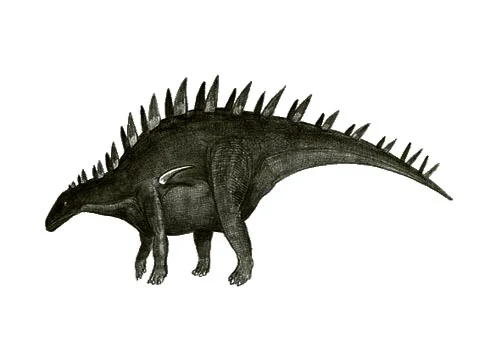Lexovisaurus (Lexovii lizard)

Leks-o-ve-sore-us
Robert Hoffstetter - 1957
Herbivore
Estimated 6 meters long
Armored Dinosaur
L. durobrivensis (type)
England - Oxford Clay Formation. Possibly France and Germany
Late Jurassic, 160 million years ago
Lexovisaurus Facts
Lexovisaurus is a genus of herbivorous dinosaur that lived during the Late Jurassic period, approximately 160 million years ago. It belongs to the group of dinosaurs known as the stegosaurians, which are known for their distinctive plates and spikes on their backs and tails.
The name Lexovisaurus comes from the ancient tribe of the Lexovii, who inhabited the area of present-day Normandy, France, where the first fossils of this dinosaur were discovered in the early 19th century.
Lexovisaurus was a medium-sized dinosaur, reaching lengths of up to 6 meters (20 feet) and weighing around 1 ton. It had a bulky body with short legs, a short neck, and a small head. Like other stegosaurians, it had a double row of bony plates on its back and two pairs of spikes on its tail.
Fossils of Lexovisaurus have been found in several locations in Europe, including France, England, and Germany. The best-preserved specimen was discovered in the UK and is now housed at the Natural History Museum in London.
Based on its anatomy, paleontologists believe that Lexovisaurus was a quadrupedal herbivore that fed on low-lying plants. Its spiked tail may have been used for defense against predators, while the bony plates on its back may have helped regulate body temperature or serve a display function.
Although Lexovisaurus is not as well-known as some other stegosaurians, it has played an important role in our understanding of the evolution and diversity of this group of dinosaurs.



